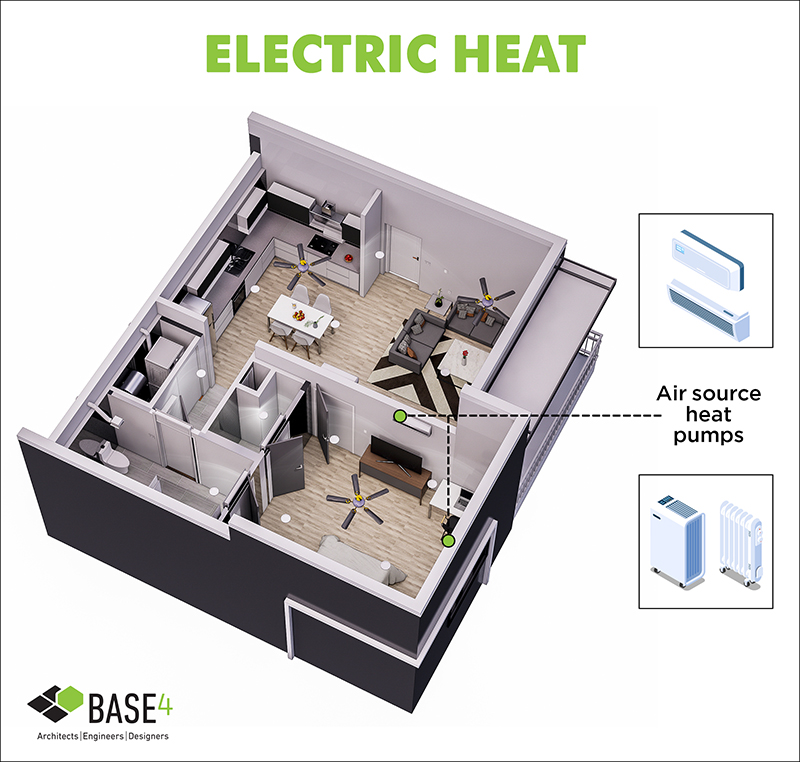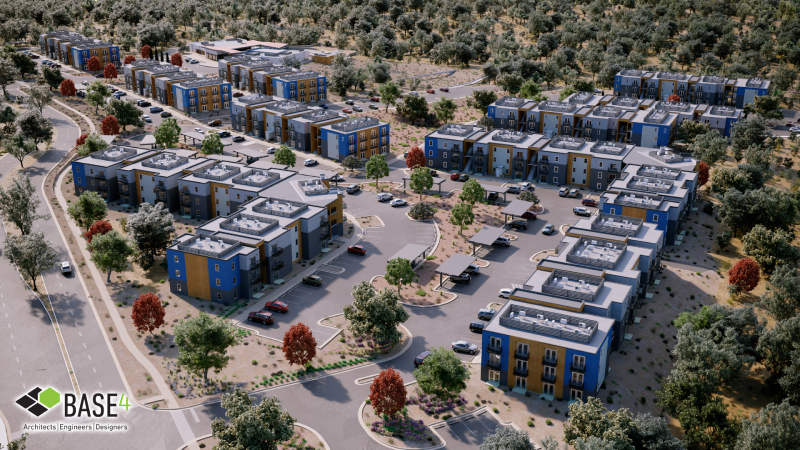Colder weather is moving in! Let’s talk about the heating on your multifamily developments. Heating is one of the most energy-consuming aspects of any project. As a developer, you know that there are different options, gas or electric. However, when it comes to choosing which option, it’s always ideal to select the most efficient and economical choice. Recently, there has been a push to electrify buildings, but is that the right choice for your development? Read on!
What exactly is “Electric Heat”?
Electricity can provide different forms of heat, but the heart of this discussion is about using heat pumps for heating air and water in a home or apartment. In its most simple form, a heat pump is an air conditioner running in reverse. Instead of pulling cool air off a coil to cool air, you reverse the refrigerant cycle and pull hot air off the coil to heat air.

Heat pumps have been around for quite some time, but in recent years heat pumps have made tremendous advancement and are now viable contenders for a heating solution for residential projects. This, along with significant public advocacy for decarbonization, has now moved Electric Heat into mainstream media discussion.
Should I consider electrical heat for my project?
This is difficult and not easy to answer, but here are a few main points to consider: the biggest driver in determining this is where your project is located. This is not only due to the thermal climate you live in but also the state requirements and utility costs.
- State Requirements: Some states within the U.S. are heavily pushing electrification efforts. Washington will be the first state in the U.S. to require all new multifamily buildings to use only electricity (i.e., heat pumps) for both space heating and water heating–no gas allowed, which is now part of their 2023 building code. If your project is in a location with current or future code adoption mandates, you’ll want to consider (and may be required to use) an electric heating source.
- Climate Zone: The NAHB shared a report recently released by Home Innovation Research Labs. This study showed that climate zone had a very strong influence on both construction costs and energy use costs regarding electric heating. For example, in colder climates, special “cold climate” heat pumps are needed. These systems are more expensive, typically $8,000-$9,000 more compared to a gas furnace.1
- Utility Costs: In this same study, energy use was found to be higher in colder climates when using electric heating. For example, according to the study, Minneapolis’ annual utility costs increased by $650 when moving to electric. In warmer climates that require less heating, energy costs were typically comparable between electric and gas. 1
In addition, this topic has become highly political and heated in nature. It is not uncommon to see headlines like the one below in states pushing for electrification.

![]() Washing Building Code Council hears an earful in Yakima about switch from gas to electric.
Washing Building Code Council hears an earful in Yakima about switch from gas to electric. ![]()
In these areas, green advocates are clashing with other agencies and corporations that believe we have an electrical grid that cannot handle the additional power consumption (a problem that must be addressed first).
For more on this topic, check out this great YouTube video below which gives a great summary:
Video Source: Vox
For more on this topic, check out this great YouTube video below which gives a great summary:
BASE4 is here to help!
We will walk you through the code requirements, help you explore your options, and determine the best solution for your project. Our team members are experts in design, having design experience in every state—ensuring quality and speed-to-market. We are architects & engineers rethinking the way buildings get built!


Thank you,
Blair Hildahl
BASE4 Principal
608.304.5228
BlairH@base-4.com
![]()
Source:
1. https://www.nahb.org/blog/2021/03/how-much-does-whole-home-electrification-cost/




